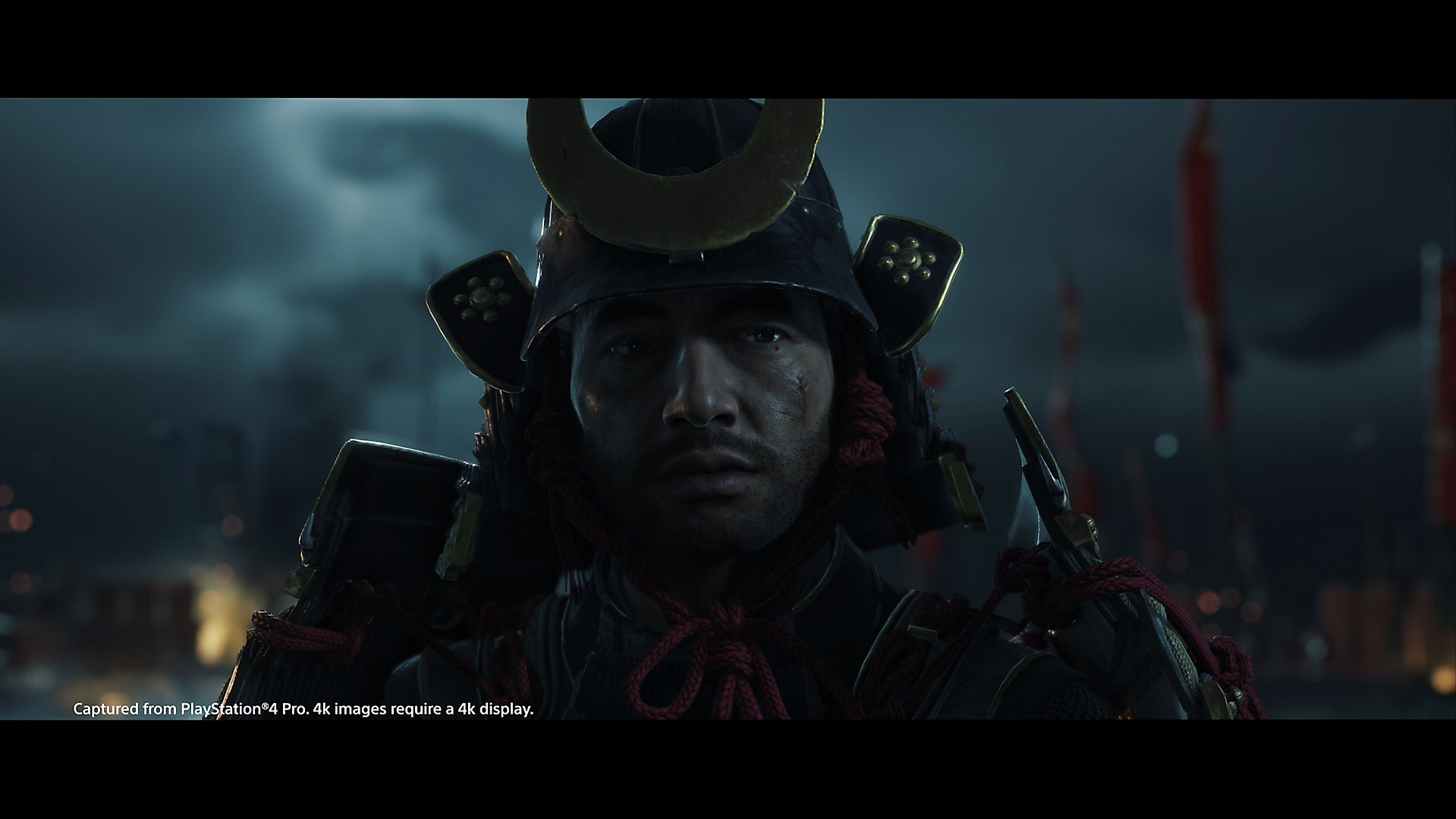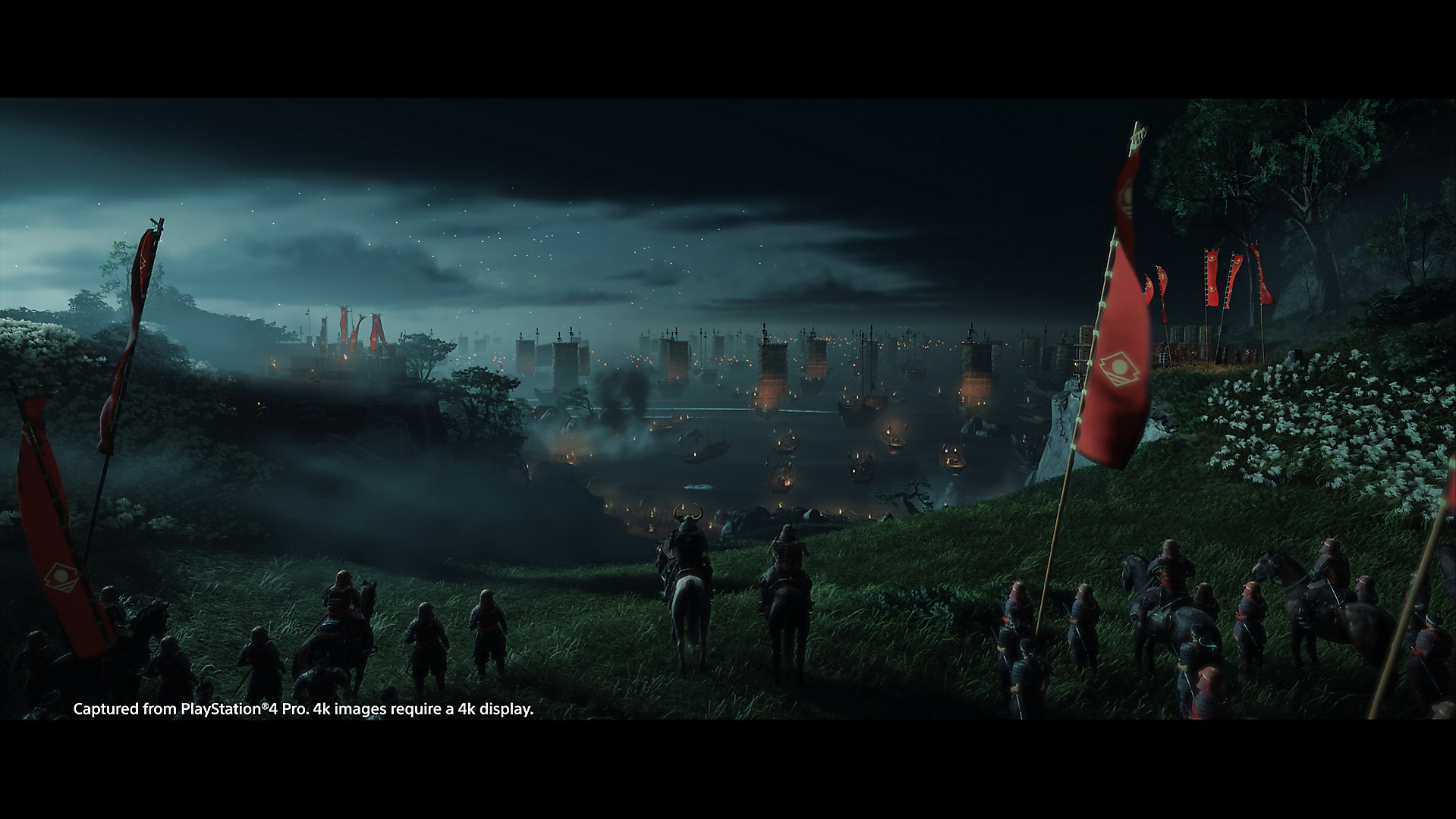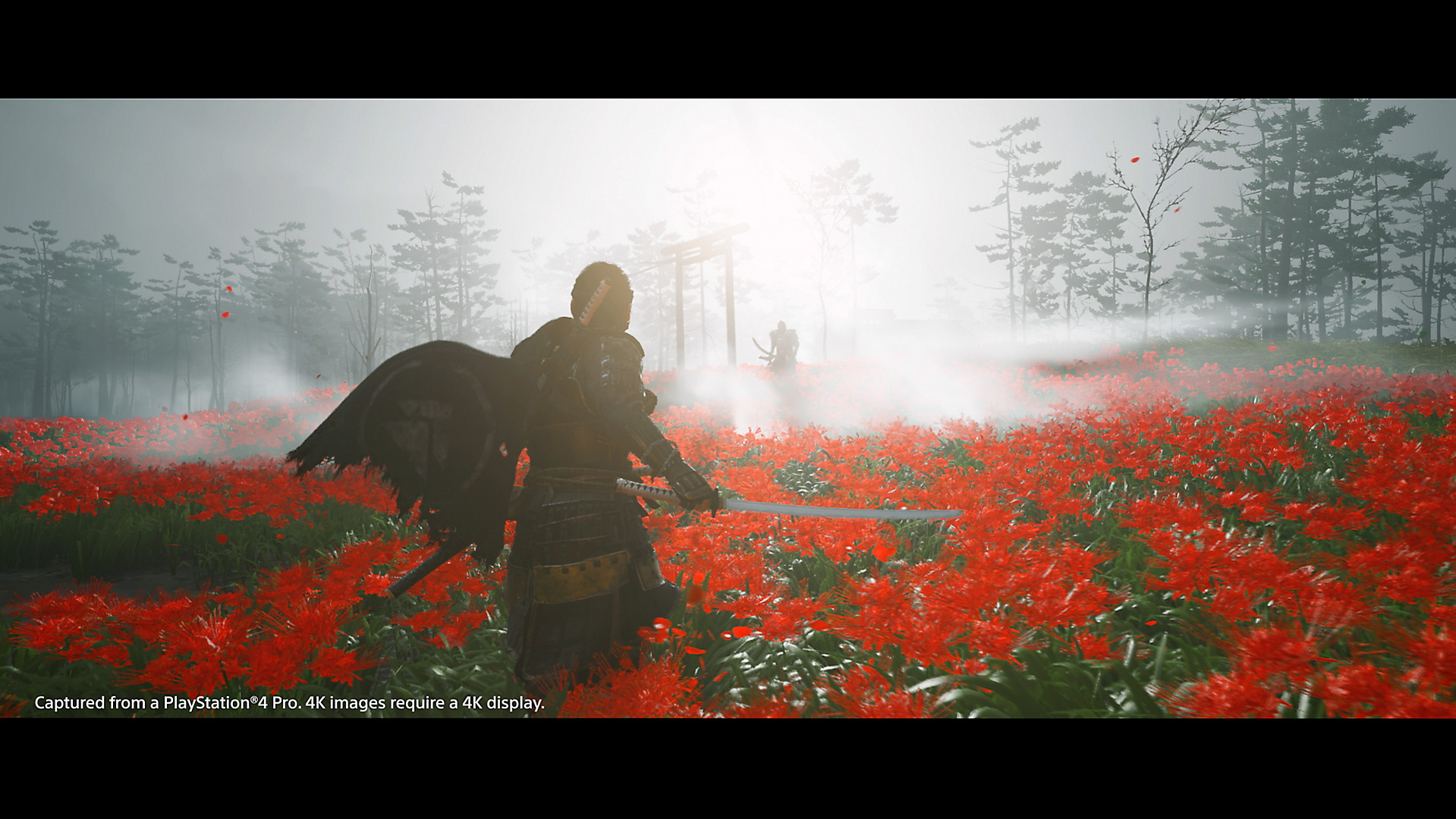The Combat Gameplay
Ghost of Tsushima offers utter satisfaction and grips you in sublimely in terms of gameplay. Inspired right out of the works of Akira Kurosawa, the blows dealt by Jin Sakai are synchronized to make you feel you’re inside the world of GoT.
Principally, the mechanics are fairly basic. There are light attacks to deal with rapid, swift damage to enemies combined with massive attacks that are, in turn, slower but impact considerably more. Furthermore, there’s a block, and a dodge button to hone your defensive skills, and fight like a real ingrained samurai.

Ghost Of Tsushima
The game involves the concept of stances. As you progress, you unlock new stances, each offering their touch of awesomeness. The game starts you off with the Stone Stance, optimal for getting around opponents with ease. As you keep slicing your way forward, you’ll next unlock Water Stance, a technique that is based on a more substantial, more powerful approach towards eliminating Khotun Khan’s men.
All around the chaos, you have to find peace with the total of four stances that you acquire in the game, equipping the right one instantly in combat, according to the type of enemy you’ll be put against.
Ghost of Tsushima’s combat, although greatly versatile, is highly unique to introduce stand-offs. This is a one-on-one showdown against your enemy where perfect timing gets you a clean-cut, and a simultaneous death on your hands. The point upgrade system of the game lets you invest in stand-offs, so what starts as a single enemy, can end up in a takedown of a chain of enemies, all in a classy manner.

Ghost of Tsushima Screenshot
When Jin starts to develop stealthy measures, you can observe this is where the game stumbles a bit, and a degree of inappropriateness is added to it. It’s all going great until an enemy detects you, and you’re on the run. To your surprise, you’ll observe how easy, and improper it is to lose the heat. For instance, if you climb atop a rooftop, you’re not about to get followed there. Moreover, Jin’s arsenal, in collaboration with stealth, is very elementary. There’s no creativity involved, and the schematic isn’t on par with the melee system.
The Captivating Plot
Jin Sakai, the protagonist, is a part of a group of samurais who swore to protect their homeland no matter the peril that approached. In keeping their promise, the onslaught of the Mongol Empire in 1274 leaves Jin as one of the few remaining survivors, and a fire within to restore peace and drive out the invaders.
The fearsome and ruthless Khotun Khan leads the Mongols. Admiration where it’s deserved, it seems as if the developers paid a lot more attention than an ordinary one would have in creating this fascinating villain. The calmness combined with ill-fated cunningness, you can never tell what this heartless General is up to. In their first face-off, Khan shows Jin he’s still in the shadows with his ways, and carelessly throws him off a bridge. It’s safe to say, Khotun Khan is going to stay in the memory books as one of the most demanding, and charismatic villains to ever grace the challenge of being the main antagonist.
Starting with all the right intentions, Jin is hastily shown in battle why traditional samurai techniques, and the honor associated with following the code, isn’t even going to be close to fulfilling his purpose. Perhaps, the most significant dispute here is accepting to adopt the change and pick up the rather, dishonorable way of the Ghost. This refers to stealth and taking down your foes with discretion, which is considered an insult to the enemy and yourself when the symbol of the sword is in question- the highest respect for a samurai.
Therefore, our heroic swordsman devotes himself to free Lord Shimura, the nephew of whom is Jin himself. As Shimura is held captive by Khotun Khan, Jin embarks on a journey to free his uncle, get more strong, and gather the left allies, as he realizes that this feat is not a one-person job.
Tsushima’s Ambience
There’s a lot you expect from a free-roam/open-world type of game, and especially when it’s anticipated as a PS4 exclusive. Quite profoundly, Ghost of Tsushima is a sensational display of pure beauty. To paint a picture, it’s poetry in motion.

Amazing Landscapes
Behold spectacular landscapes and gorgeous scenery of feudal Japan as you venture on with your trusty horse and hope to regain the lost island of Tsushima. Sure, there are a few falters here and there with stealth, the foe’s AI, and trivial peculiarities, but the brilliance of the game outweighs any mishaps and amounts to picture-perfection.

Ghost of Tsushima – Great Ambience
When one begins to talk about the atmosphere, it’s quite evident that the feel of the game is breathtaking. You experience what it means to be someone aching to recover the happiness in the air, the bliss in the environment, and delight coupled with laughter among the people. As life happens, all that is brutally lost when Khotun Khan and his army make their way into Tsushima- the only place standing between them and mainland Japan.
To emphasize exploration and to get the most out of the game, Ghost of Tsushima has no waypoints within. This means that you get to traverse your way to the objective by yourself, observing every minor element that catches a glimpse of the eye. You could always burst through the game with the daring main quests, but true serenity is taking small steps, and appreciating the little things that make Ghost of Tsushima a masterpiece.
You could always while bursting along with your four-legged companion, dismount, and count the many little aspects of this beautifully made game. Water shining off the sun’s reflection, a waterfall rushing in all its glory, and dazzling mountains behind a lustrous ocean are just a few noteworthy mentions to leave you awe-inspired, just like us.
The Bottom-Line
Ghost of Tsushima is genuinely an excellent sendoff for the PlayStation 4, being the last AAA exclusive to arrive for the console. The game offers unmatched free-roam capabilities and is distinctively a breath of fresh air. With its multi-faceted combat system that outmatches any of its rivals, this action-adventure samurai game’s story although looks generic is good enough to keep you hooked, all the while letting you enjoy the scenes in-between and the island of Tsushima’s glamorous surroundings. The aspects where it stalls the gamer aren’t enough to flinch on getting the best out of this game, as all the stumbles are still not going to stop you from having a terrific experience.